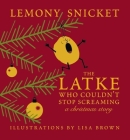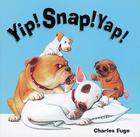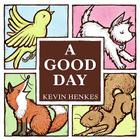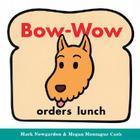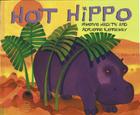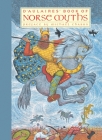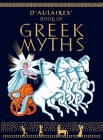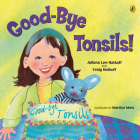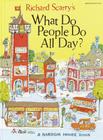I must confess, goy that I am, that I don't know much about Hanukkah books. Our local library children's section has a bunch of them, none of which, at least at a cursory glance, looks particularly great. At one point last year, Eleanor picked out a Hanukkah version of "The Twelve Days of Christmas," with cartoony drawings of a raucous family getting five spinning dreidels, four bags of gelt, etc. We brought it home and read it, but as she didn't have any experience of Hanukkah yet and didn't know the song the book was parodying, it was a bit of a bust. I'll try the books you suggest, and would certainly be interested in hearing about others (thanks, Rachel!).
When I mentioned this topic to my wonderful student teacher, however, she perked right up. "Have you read The Latke Who Couldn't Stop Screaming?" she asked. I confessed that I had not. She told me it was by Lemony Snicket (I've read none of his books, but know they are huge favorites -- what's your take on him?), and that she loved it so much she had given a dramatic reading of it to her family over Thanksgiving. I asked Zara to tell me a little more about it, and here's what she wrote:
The Latke Who Couldn't Stop Screaming: A Christmas Story
“This story ends in someone’s mouth, but it begins in a tiny village more or less covered in snow.” And so begins what is definitely not another Christmas story, and although it’s written in a picture-book format, the humor will appeal to adults. The book follows a latke that was created in a cottage that was “regarded with some suspicion, as it was the only place not decorated with flashing colored lights at this time of year.” As the latke runs around the town, he meets some other holiday favorites—flashing lights, a candy cane, a pine tree. With every new encounter, the latke tells a little more about the history and celebration of Hanukah. But he just can’t stop screaming, because nobody seems to understand that Hanukah isn’t Christmas—as the latke shouts, it’s “something completely different!!”
So true. Thank you, Zara!Finally, a story about how it can sometimes feel to be a Jew at Christmastime. Sure, we love the candy canes, and the lights are beautiful, but Hanukah is more than eight days of presents, and it’s definitely not a Jewish Christmas. The latke reminds us about the true meaning of Hanukah—having hope even when you feel outnumbered. It’s hard to be the house without the decorations or the latke constantly trying to explain himself to a candy cane who just doesn’t understand.
Love, Annie

